I had one of these dreams the other night.
My anxious exam dreams usually go something like this . . .
I’m back in high school and I’m not having a fun time.
I’m freaking out because I haven’t studied for an exam (and this exam is in just a few hours). So I’m scrambling. I’m cramming.
But it’s not working. I’m looking at the page and nothing is going into my brain. I’m filled with this sense of impending doom. But just before I enter the exam room, I wake up.
It was just a dream.
Why am I still having dreams about high school exams?
I graduated from high school nearly two decades ago!
These dreams usually occur a few weeks before I need to deliver an important presentation. I’m not big on interpreting dreams but here’s what I believe my subconscious is trying to tell me . . .
Lift your game. Stop slacking off. Start preparing.
Both activities require you to exert mental effort and be well prepared. They can also bring up a lot of anxiety.
When I deliver a presentation, I have to recall a large amount of content from memory. I need to keep an eye on the time. I have to be organised and make sure I have all my props and equipment. I also need to stay calm because if I look stressed, this will make the audience feel stressed.
Just like you can’t wing a 3 hour long exam, I can’t wing a presentation in front of a group of 200 students.
The strategies that help me to memorise and deliver my talks can help you to perform well in your exams.
The strategies I share below help me to think clearly and quickly under pressure. They keep me calm and grounded in strange and unusual environments.
I realise some of the strategies below may seem a bit over-the-top. But my job is to present ideas to others. If I bomb out, I usually won’t get a second chance to present at the school again. So it’s really important that I apply myself and do my best every time.
When you leave things to the very last minute and feel rushed packing up your gear, there’s a good chance you’ll forget something important.
This is why I pack all my presentation gear (e.g. props, adapters and data projector) the night before. I also go as far as packing my own glass and bottle of water.
Just before I go to bed, I lay out the clothes I’m going to present in. This means I don’t have to waste my brainpower on this small stuff in the morning.
Just like you need to think quickly in an exam, I need to be able to think quickly on my feet when I present. Quality (uninterrupted) sleep helps me to do this.
If I mess with my sleep, I mess with my ability to think.
I have developed a strict bedtime routine – I go to bed at the same time and I wake up at the same time. My phone is on silent and charging in another room when I sleep.
Now is the time to develop good sleep habits. Aim to get 8 hours of quality sleep each night.
Consider doing some light exercise (nothing too strenuous) before an exam.
Whenever possible, I workout at the gym before I present. Not only does this make me feel powerful and strong, but it puts me in a positive frame of mind.
It’s a fine line though. If I do a gruelling workout, I’m going to exhaust myself. I need to make sure I don’t overdo it.
On the days when I do happen to push myself too hard, I’ll take a quick 20 minute power nap to re-energise before a talk.
If I’m feeling a bit nervous about delivering a presentation, I don’t make a big deal about it. I view a bit of nervous energy as a good thing. I think, “I must be excited”.
I’ve also come to see a bit of nervous energy as better than being completely chilled. If I’m too chilled, I can’t muster enough energy to inject into the room.
If you’re feeling nervous about an exam, say to yourself, “I’m feeling excited!”
When I arrive at a school to present, before I get out of my car, I’ll sit and breathe deeply for 2 – 3 minutes. This helps me feel calm and grounded.
I also put my phone on airplane mode so I’m not distracted by any random texts or calls.
Your brain needs fuel to think and function well. Where does it get that fuel from? Food. So whatever you do, don’t skip breakfast or lunch before an exam.
Before I present, I make myself a healthy smoothie. This gives me the energy I need to deliver high energy presentations.
I once cooked up and ate a big vegan schnitzel before I had to deliver an important keynote presentation at a graduation ceremony. This ‘schnitzel’ was packed full of salt and preservatives. I kept sipping on water throughout the whole ceremony. I was freaking out (“How am I going to do this? I need to go to the toilet!”)
Luckily, I managed to deliver the speech without any problems. But it was a close call.
I learnt an important lesson that night . . .
Don’t experiment with any new or strange foods before giving a talk. You’re asking for trouble.
Work out what foods make your brain feel good and then stick to those foods before each exam.
Give yourself plenty of time to get to the exam room. There’s nothing worse than feeling rushed, stressed or getting lost.
This is why I like to arrive at a job at least 30 minutes before I need to present. This gives me plenty of time to find the venue, get set up and avoid any technical problems.
Since I don’t rely on any notes or palm cards when I present, I need to know my content back to front and inside out.
How do I learn the content?
I use a combination of three highly effective study strategies:
1) Dual coding (using words and pictures to help you learn) ;
2) Active recall (bringing information to mind); and
3) Spaced practice (spacing out your study, not cramming).
These three strategies are much more effective than rereading and highlighting my notes. I recommend you use these study strategies to prepare for your exams.
Before each exam, keep away from people and places that drain your energy and stress you out. Avoid energy vampires (i.e. people who drain your mental energy and make you feel a bit out of whack) as much as possible. Don’t waste your brainpower on these toxic people. Save it for your exams.

Sometimes things will go wrong that are completely out of your control. And you have to just roll with it and do the best job you can under the circumstances.
For example, earlier this year I did a job where nothing seemed to go to plan. The receptionist was rude and unhelpful. The venue for the talk wasn’t booked. The students didn’t have chairs to sit on. To make matters worse, it was a super hot day and the air-conditioner wasn’t working.
What was I supposed to do?
Having a meltdown wasn’t going to help.
In times like these, you need to remain calm. Focus on the things you can do to make things better going forward.
If you feel hungry or you have a full bladder, these things are going to create some discomfort. It will be hard to concentrate and recall information in the exam.
This is why I always make sure I take care of basic things (e.g. having a healthy breakfast or snack) before I go on stage to present.
If you have two exams on the same day, you need to think about how you’ll manage your energy levels. You need to conserve your energy.
For instance, if I need to deliver two or three different talks in a day, I manage my energy levels by taking deep breaths and frequent sips of water. I also pack plenty of healthy snacks. If I can go home in between talks to have a power nap, then I’ll do that, too.
Preparing to sit an exam is like preparing to go on stage for a performance. If you can use some of the strategies listed above, you can stay calm, energised and present. This is much better than the alternative (feeling stressed out, fatigued and distracted).
Share This:
You need to practice. And practice in a particular way.
If you’re preparing for a driving test, you can’t just study the Drive Safe Handbook (i.e., the theory and road rules).
You need to get behind the wheel of a car and drive.
Yes, it can feel uncomfortable and scary to begin with. But you’ll only improve your driving skills by pushing through the discomfort, placing your hands on the wheel and your foot on the accelerator.
If a person spent all their time only studying the road rules and never getting behind the wheel of a car, how would they go in the driving test?
It would be disastrous!
Yet, many students are approaching exams in a similar way.
These students are doing the equivalent of only studying the road rules handbook before the exam.
Here’s how they prepare for academic exams:
• By creating beautiful sets of notes
• By rereading their books and notes
• By highlighting their books and notes
• By rewriting their notes
• By summarising their notes
These are not effective ways to prepare for an exam.
Do these ways of revising feel nice and easy?
Yes. They certainly do.
But are they effective ways to remember information?
No.
Think about it like this . . .
What do you need to do in most academic tests and exams?
You have to read questions and pull the information out of your brain. Most of the time, you can’t look at your notes and books.
It’s just you and your brain.
You’re not being assessed on your ability to summarise information, your ability to reread your notes, or highlight information. So, why would you prepare for an exam in that way?
The best way to prepare for an exam is by practising remembering information. This is how you become masterful at answering questions with accuracy, speed, and confidence.
You don’t get that speed, confidence, and deep understanding by rereading your books and notes.
If you reread as an exam revision strategy, the only confidence you develop is fool’s confidence. You delude yourself into thinking you know it (“I’m ready!”). After reading your notes a few times, the ideas feel familiar to you (“I know this stuff”).
But trust me, you’ll struggle to retrieve the information in the exam.
Imagine yourself driving through red lights and failing to take the handbrake off before you leave the parking lot: that’s you . . . and it’s a fail.
I know this may sound harsh. But I’m speaking from personal experience.
In high school, it felt good to highlight my notes and reread them leading up to an exam. However, when it came crunch time, I was stressed out in the exam because I couldn’t retrieve the information. I felt embarrassed and confused by my results.
“But I studied so hard!” I’d cry. Why didn’t all those of hours of reading translate to better grades?
I wish someone had gently explained to me, “Yes, you did study hard. But you didn’t study effectively”.
Fast forward 20 years and I’ve learnt how to study smarter (not harder).
“The best way to prepare for any test or exam is to use a learning technique called active recall.
Active recall involves testing yourself.
You push your notes and books to the side and try to bring to mind as much as you can about a topic you’ve already covered in class. For example, you can use a piece of paper to write or draw out what you can remember on the topic. Once you’ve exhausted your memory, you check your books and notes to see how you went.
Yes, this is challenging. But it delivers results.”
I use this technique to learn content for all my school presentations.
When I speak to a group of students, parents, or teachers, it may look like I’m casually explaining strategies, but all my presentations are carefully planned and practised.
If I didn’t do this critical prep work, I would end up rambling.
This is why two weeks ago, I started doing active recall to learn a new presentation —or at least, I thought I was doing active recall.
I pulled out a copy of my presentation slides that had my notes scribbled all over them.
Within the first five minutes, I had to stop and be honest with myself: I wasn’t doing active recall. I was reading my notes.
Many of us can fall into the trap of rereading when doing active recall.
As the Learning Scientists state in their book Ace That Test:
“When you try to bring information to mind from memory, it often feels really difficult. It can be really tempting to quit or try to look up all of the information in your notes or your textbook, but slipping into re-reading your notes or textbook will reduce learning. Instead, it is better to try to bring as much information to mind from your memory as you can, and only after you have tried this should you look in your notes, textbook, or other course materials to see what you got right and what you forgot or need to work on more.”
Reading your notes/books over and over again feels nice and easy. It doesn’t require a lot of strain and mental effort.
In contrast, active recall can make us feel clumsy and awkward, especially in the early stages of learning something new.
So, I asked myself the question:
How can I stop myself from rereading when I do active recall?
I brainstormed ideas and devised a plan. Then, I broke down the process and practised running through it several times. To my delight, it worked!
Whether you’re trying to learn a new presentation or preparing for an academic test or exam, here is a process you can follow to avoid the trap of rereading.
Clear away your notes, books, and any other distractions. Let’s face it: if your notes and phone are in front of you, it’s like having a packet of crisps or a bowl of lollies within arms’ reach. It’s too tempting.
Your notes are important (you need them for step 4), but for now, take them and place them away from your body in another room.
Active recall requires 100% of your brainpower. If your attention shifts from your study to your phone, the effectiveness of your active recall sessions decreases. This is why I highly recommend you put your phone away from your body in another room before you sit down to do active recall.
Once you’ve cleared away distractions, take out your practice exam paper or list of questions (in my case, a printout of my presentation slides) and get a pen, a timer, and some sticky notes.
Your goal for the next 10 minutes is to recall as much as possible. Exhaust your memory.
I scribble all over my slides (yes, it’s a messy process). If I run out of space on the page, I grab a sticky note, write the additional information on it, and then stick it down on the relevant slide.
During these 10 minutes, expect to experience some discomfort. In fact, welcome and celebrate the discomfort!
The discomfort is a sign that you are on the right track and deep learning is happening.
Active recall can be mentally exhausting. After doing 10 minutes, reward yourself by taking a quick break. I usually get up and move my body. Sometimes, I make myself a warm drink or smoothie.
Before returning to your workstation, grab your notes or the answer sheet from the other room.
It’s not enough to pull the information out of your brain. You have to see how you did (what you got right and wrong and where the gaps in your knowledge are).
So, how did you go?
At this point, enter teacher mode. Pretend to be a teacher giving yourself feedback.
I pull out my red gel pen, fun stamp and sticker collection, and highlighters.
Now is when it’s okay to look at your books and notes. Pull them out and begin marking up what you got right, wrong and anything important you missed.
In my case, if any presentation content is a bit rusty, I’ll highlight that section. The highlighter signals to my brain that this section needs extra practice.
It’s important to celebrate any content you recall correctly. Give yourself a tick, a fun stamp or sticker or draw a smiley face to congratulate yourself.
This is a process. It usually takes a few practice sessions to successfully retrieve the correct information. Encouraging yourself makes the process fun and gives you a feeling of success (“I’m making progress!”).
Once you finish step 4, make a note for your future self: what question or section will you work on for your next active recall session?
This reduces decision fatigue. When you next sit down to study this subject, there’s no need to waste precious mental energy thinking, “What should I revise next?” Your brain knows exactly what it needs to do, and you can begin doing active recall straightaway.
After you’ve decided on your starting point, prepare your workstation for your next active recall session (e.g., put your notes out of sight).
These six steps work for me. But feel free to modify this process so it works for you. For example, it can help to do active recall with others (e.g., in a study group with friends testing each other). When everyone experiences the discomfort together, the process becomes less painful and more enjoyable.
Active recall works, but paradoxically, it feels like it’s not working. Often, when I do active recall nothing comes to mind. That’s normal! Don’t use this as an excuse to abandon this highly effective strategy and return to rereading, which is an ineffective strategy.
My advice is to trust the process. You need to persevere with this strategy for long enough to see with your own eyes that it works. Don’t expect instant results. This process takes time, but the results are well worth it.

When my competitive instincts kick in, I feel like a desperado. It’s an old feeling from childhood where I feel like I’m constantly falling short (not good enough or smart enough).
Over the past few years, I’ve trained myself to focus on running my own race. I’ve had to learn to do things my way. As it turns out, when you live this way you feel better about yourself and less anxious too.
When I was 17 years old, I was struggling to figure out what I wanted to do with my life (“Should I be at Law school? Should I quit and get a job?”).
To keep depression at bay, I forced myself to exercise in the park every Sunday.
That’s where I met a wise woman who happened to be a family lawyer.
Over the course of a year, we became friends exercising in the park. I confided in her that I was struggling at university.
“I’m not sure if Law school is the place for me”, I said.
I also mentioned to her that I had failed my first test but I stopped short of telling her my mark (only 5%).
It must have been obvious that I was in need of a bit of a confidence boost because the following Sunday she rocked up to the park with an old record in her hand.

The track was called I’ve gotta be me.
She said “This is for you. Listen to it when you get a chance”.
Back in those days, there was no Spotify or music streaming services. In order to listen to this record, I had to go to Cash Converters (a secondhand pawn shop) and purchase a clunky stereo system with a record player.
I listened to the song hoping to have some earth shattering realisation about what to do with my life. And when it never came, I listened to it again and again. Still nothing.
“What is she trying to say to me with this song?” I cried.
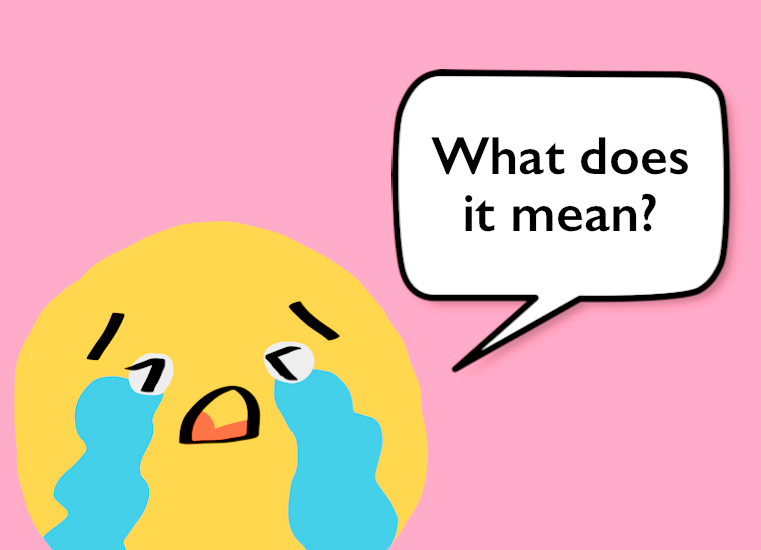
Looking back, it’s so obvious what she was trying to say (“Be yourself! Follow your dreams! Don’t give up!”).
The problem was I was treating listening to this song like it was an assignment to analyse a poem or a piece of abstract art. I was overthinking it.
Looking back, it didn’t matter that I didn’t fully understand the lyrics. I was really touched by this lawyer’s kind gesture.
Law school felt like such a cold and competitive place at times. Coming from a working class family, it was easy to feel like you were invisible and didn’t belong there.
Yet here was this woman (a successful family lawyer) encouraging me to be myself and keep going. That meant a lot to me.
Two decades later as I listen to the track, I get it.
It’s powerful to live life on your own terms.
What they don’t teach you in school is it’s far more rewarding to collaborate and cooperate and forge your own path forward in life than it is to compete against others and follow the herd.
It’s also a lot more fun and energising to run your own race and focus on your own progress.
It’s possible to run your own race, even if you have shaky confidence. In fact, running your own race will help you to build rock solid confidence. So the sooner you learn to do this, the better.
Here’s how you do it . . .
Instead of competing and comparing yourself against your friends or some other poor soul in your class or workplace, start competing against yourself. Compare you to you.

A simple habit you can develop is tracking your wins each day in a notebook. I do this just before going to bed (my notebook is on my bedside table).
This simple practice helps build momentum. As Dr Benjamin Hardy says “[When you cultivate this habit] you feel like you’re always winning and making progress.”
If you write down three wins every day, by the end of the week you’ll have 21 wins down on paper. If you keep this practice up and look back over your entries, something shifts. Instead of feeling like a desperado, you’ll be feeling like a champion.
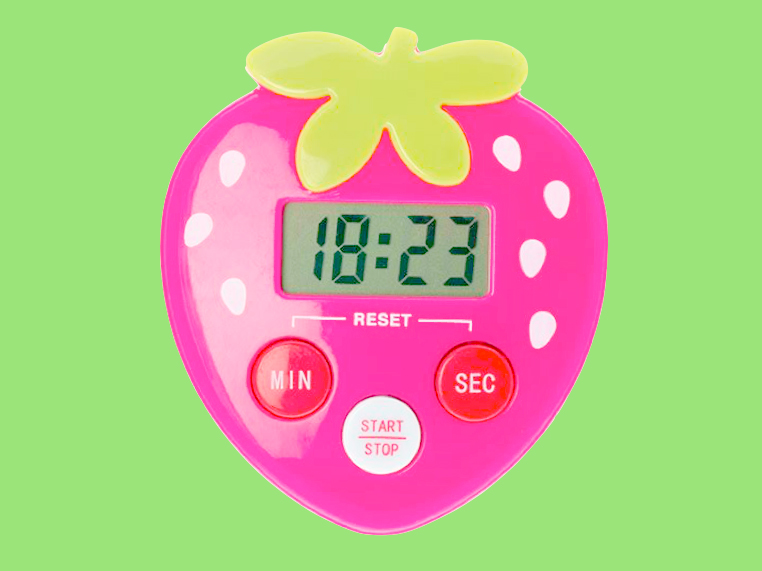
If you must have some opponent to compete against, make your opponent an electronic timer. Challenge yourself to compete against the timer.
“Can I empty this laundry basket (putting away my clothes) in under 5 minutes?”
“Can I vacuum the house in under 12 minutes?”
“How many words can I get down on the page in 25 minutes? Let’s go!”
When I’m lacking motivation, this is one way I get moving with various tasks. Timers can also help you stay focused on a task for a period of time and time your rest breaks.

Another way you can challenge yourself is with music. You can create a 25 minute or hour long playlist and use it to time your work sessions. If it’s a small task you need to complete (under 5 minutes), use an upbeat song to help you get it done.
In The Ultimate Time Management Toolkit Risa Williams recommends selecting songs with no lyrics and that don’t have any sad emotions associated with them. When it comes to your schoolwork, try to keep the music light and upbeat without being overly distracting.
The biggest mistake people can make when it comes to achieving their goals and creating new habits is to push themselves too hard.
I’ve been sitting at this computer for over an hour and I’ve ignored the last two timers that have gone off. Why? Because I’m in a flow state. When I started writing this blog, it was slow and painful. But now the ideas are flowing and I’m into it.
But I know I need to stop soon. If I don’t, I’m going to fry my brain.
As Greg McKeown says:
“You’re trying make sure that you don’t use up more mental energy than you can recuperate each day and each week. You want to be able to sustain the pace and get the job done. This is in contrast to being intermittent in your effort when you go big for a couple of days and then you can’t even work on it after that because you fried your brain, and you can’t get back to it.”
In a nutshell, think of this race you’re running as being a marathon (not a 100 metre sprint). Pace yourself.
Spending too much time on social media or following the wrong people online is the equivalent of pulling a hamstring when you’re out running your own race. It will mess with your mind and take you off course.
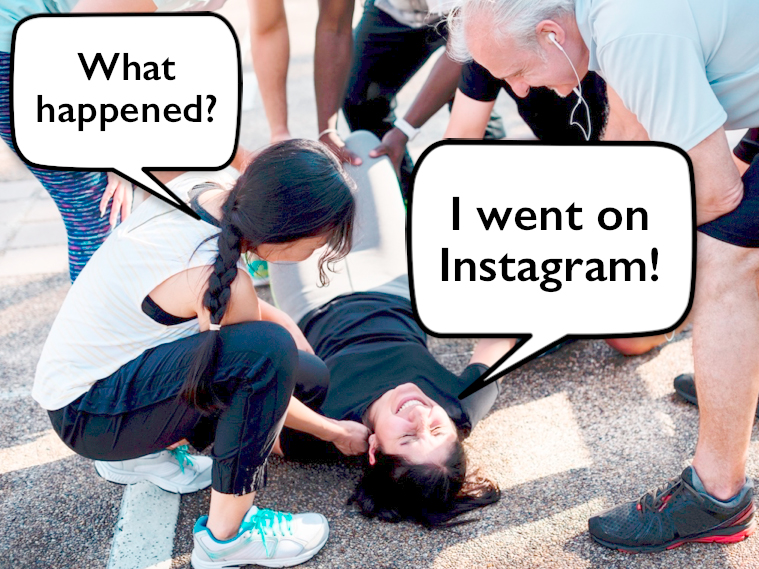
One of the problems with social media is it is designed to have you engage in upward comparisons. It puts you in a state of mind where you are constantly seeking approval from others.
Instead of focusing on what you need to do to move forward with your goals, you’re wasting time and energy following what others are doing. You get pulled into the outrage machine. Very quickly you can lose sight of your goals.
When you spend too much time on social media, your perception of reality also gets warped. Being exposed to envy inducing perfect pictures and posting only the best parts of our lives can make us forget that life is indeed very messy! In the book Disconnect Jordan Guiao explains:
“It is travel without the sixteen-hour flight, the fit body without the six-days a week workout regime and birthday parties without the crying babies. These approximations of reality start to become our new normal. As we edit out the messiness and ugliness of real life, we begin to forget that this messiness and ugliness exists for others too.”
Guiao recommends asking yourself whether the people you are following add value to your life. He says:
“Periodically reassess who you follow on social media and why. Is an influencer offering valuable advice and insights or just posting pretty pictures that make you feel bad about yourself? Do you think about their content when you’re offline? Does it serve you to comment on others’ posts if you are only doing it to seek their approval? What are you gaining from these interactions – and what are you losing?”
When you decide to ditch the pretty pictures and unfollow the influencers, you’ll notice a dramatic shift in how you feel about yourself and how you’re tracking in life.
If you’re like me, competing against others will leave you feeling desperate, insecure, and chaotic. So, why not start playing your own game?
Stay true to yourself. Do it your way. Set your own rules and path.
Using a timer or a song can be a simple way to get moving with a task. Reducing time spent on social media will help you to stay focused on what you truly want without getting distracted by all the noise and drama that’s playing out online.
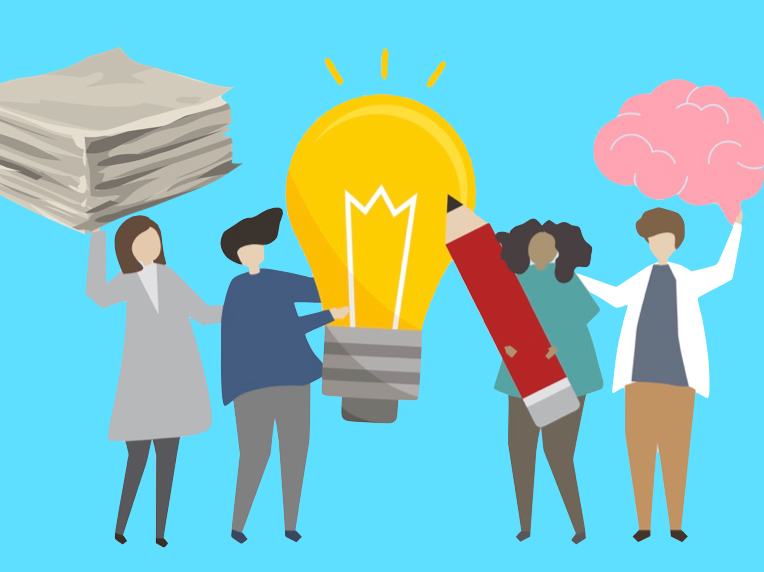
In their minds:
Beautiful notes = effective exam preparation
But is this the most effective approach to take?
In her book An Insider’s Guide to BA [Bachelor of Arts] Rebecca Jury states:
“Would you sit your practical driver’s test without ever having practised driving a car? Preparing for an exam by only taking notes is like preparing for your restricted driver’s licence by only reading the Road Code. Bad idea.
You need to learn the theory and then practise in the medium in which you are going to be assessed.”
In short, if you want to do well in your exams then you’ll need to do practice exams.
When you do practice exams this . . .
• helps you see how well you understand the subject (it’s a reality check!)
• gives you the opportunity to do active recall (AKA retrieval practice)
• helps you to pinpoint gaps in your knowledge (which is 80% of the battle when it comes to learning)
• gives you a sense of the format and types of questions you’ll be asked
• helps you to build your confidence for the actual exam
But I understand the idea of gathering a pile of past papers and then sitting down to do them can be completely overwhelming.
So, we’re going to break this process down, step-by-step, so it’s not so scary for your brain.

You can gather past/sample exam papers in the following ways:
• Talk to your teacher: This is probably the easiest way to access exam papers. Simply ask your teacher if they have any practice exams and other resources they are willing to share with you.
• Trade exam papers with other students: Reach out to someone you know at another school who is studying the same subject and do a friendly exchange of resources (although I don’t recommend trading notes).
• Visit your State library: Most good libraries have past exam papers and study guides available for students. For instance, The State Library of Western Australia has an extensive selection of past exam papers, study guides, and Good Answer Guides (visit the WACE Study Space on Level 1).
• Government education websites: If you live in Australia, most state government departments that deal with curriculum provide past exam papers online that you can download:
Western Australian: School Curriculum and Standards Authority
Victoria: Victorian Curriculum and Assessment Authority
South Australia: South Australian Certificate of Education
Queensland: Queensland Curriculum and Assessment Authority
New South Wales: Education Standards Authority
Check in with your teacher to see what papers are most relevant. You don’t want to waste your precious time and energy doing a past paper that is based on an outdated syllabus.
• Study guides: These resources are usually created by experienced teachers who are familiar with the curriculum. You’ll want to check a few details before borrowing/purchasing a study guide:
1. What year was the study guide was published?
2. What’s the author’s background and level of experience?
3. Where are they based?
It makes a difference if the author is an experienced teacher who is familiar with your curriculum.
What if you can’t access any past papers and study guides?
Then, worst case scenario, you’ll need to make your own exam paper.
This doesn’t have to be anything fancy. All you need is a series of questions that will force you to bring the relevant information to mind.

Once you’ve gathered all your practice exam papers, do a lucky dip and pick one. Put all the other exam papers in another room (you’ll deal with them later).
Then, you need to commit to making a start on the practice exam you’ve just selected.
Here’s what you’ll need:
• A clear desk located in a place where you won’t get interrupted or distracted
• A timer
• Several good pens and anything else you’ll need to do the exam (e.g., calculator)
• A friend to share the pain with (optional)
You won’t need:
• Your books and notes
• Your phone
Here’s what you need to expect:
Expect to feel a little uncomfortable doing the practice exam. Chances are you won’t be able to answer several (or a lot) of the questions. You’ll probably feel a little awkward and clumsy, too. That’s okay. Relax. This is a normal part of the learning process.
Don’t like the idea of sitting for a full 2-3 hours to do the exam?
I get it! In fact, I wouldn’t recommend doing that.
It’s best to break it down into small chunks. You don’t want to slog it out in pain for hours on end. You’ll kill the habit before it has a chance to get established in your life.
• Set a timer for 25 minutes and make a start on some questions (without looking at your books and notes).
• Then take a 5 minute break.
• After your break, check to see how you went with the questions you just answered (take note of any weak areas).
• Take another 5 minute break.
• Dedicate some time and effort to improve on those weak areas (use effective study strategies to do this).
• In a few days time, test yourself again on those weak areas.
What you’re doing here is you’re using your the past papers as a tool to guide your study sessions.
If 25 minutes feels too hard, just select one question and do that. Doing one question is infinitely better than doing nothing!

The first exam paper can be a massive shock to your system. Chances are you’ll feel really rusty and you’ll struggle to answer many of the questions. This is normal.
It’s much better that you experience this shock now than in the actual exam. Stay strong and persevere through that first past paper!
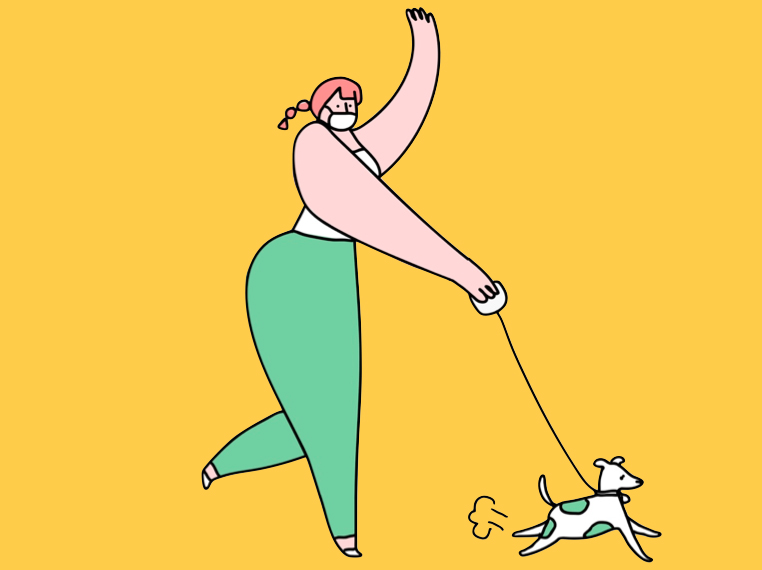
It’s normal for your brain to feel a little fried after completing exam questions. This is why it’s super important to say to yourself things like, “Great job!” and “Keep going champion!” after you finish answering each question.
Also, give your brain regular breaks. Set a timer and go do something fun and/or pleasurable. Make a smoothie. Go for a walk. Crank up some music. When the timer goes off, get stuck into answering another exam question or make a start on studying one of your weak areas.
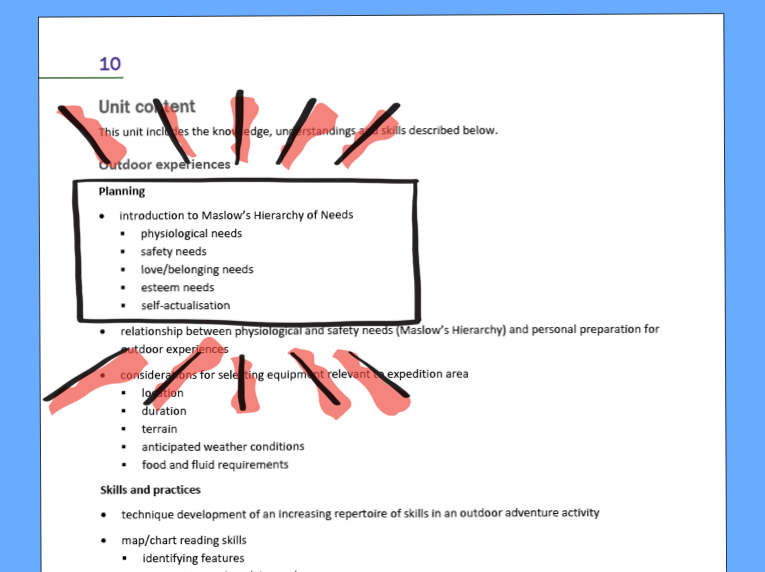
Once you’ve done a few past exam papers for a subject (spaced out over a couple of weeks), you’ll begin to see common themes/topics emerge. Now is a good time to take out your syllabus. Your syllabus, specifically the unit content section, tells you exactly what you need to know for the exam.
Arm yourself with a highlighter or a coloured pen and head straight to the unit content section.
Have a read through this section. If a concept is unfamiliar to you, take note. This is an area you’ll want to look at in a future study session.
Why bother doing this?
Because you’re checking that you’ve covered all your bases. You’re future proofing yourself so there are no nasty surprises in the final exam.
If you take this approach (i.e., doing past papers), you’ll do better than the student who spent all their time making beautiful sets of notes.
Yes, it can be a little painful and a bit of a shock to the system to do a practice exam. But remember, it’s better to experience the shock now than in the actual exam!
Dr Jane Genovese delivers interactive sessions on learning to learn, combating procrastination, exam preparation, how to focus in the age of distraction, habit formation and much, much more!
Get FREE study and life strategies by signing up to our newsletter:
© 2024 Learning Fundamentals